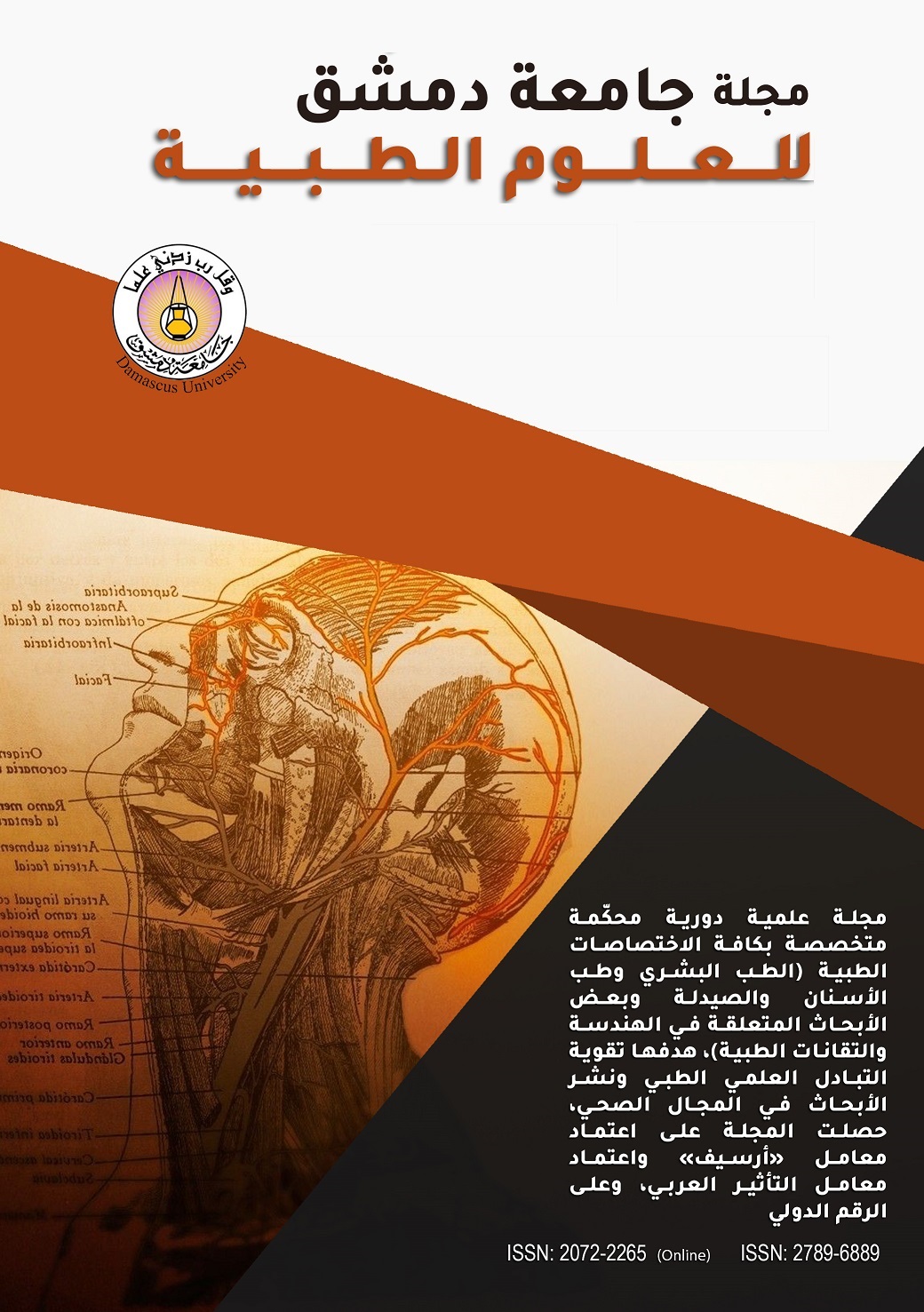The screening of cystic fibrosis mutations in Syrian patients
Abstract
Background: cystic fibrosis is an autosomal recessive disease, common in Caucasian peoples. It is produced from mutations in the gene that encods a protein called cystic fibrosis transmembrane conductance regulator (CFTR). It affects multiple systems, especially the respiratory and gastrointestinal. In addition to clinical signs and symptoms, there is laboratory diagnostic criteria: sweating test and mutation identification.
Objective: mutation identification of the CF gene in Syrian patients, comparison with other Arab and non Arab populations in addition to identify the economic expense from the use of European kit in Syrian patients. We will, also, compare the percentage of positive sweating test to the percentage of molecular test. Finally, we will study if there is genotype-phenotype correlation in cystic fibrosis.
Methodology: we studied 225 patients who had been accepted at children hospital with cystic fibrosis during nine years ( 2007-2015). The diagnosis was made after the clinical (recurrent lung infections, chronic wheezing, chronic diarrhea) and laboratory (abnormal sweating test and /or molecular test). The mutation screening was made through ready to use kit designed in Europe which can identify only 36 mutation (out of 1900 mutations). It apply the ASO method.
Results: the frequency of the mutations was as follows: F508 del:35%, W1282X: 25%, N1303K:9%, R347P: 7%, G85E:6%. One case for additional 9 mutations with 6 cases out of them were compound heterozygote. The positivity of the sweating test was about 80%, whereas the positivity of the molecular test was only 30%.
Conclusion: the f 508 del remains the predominating mutation without absolute predomination in Syrian cystic fibrosis patients. The sweating test remains the standard diagnostic test in this disease which is applicable in patients of all ages, after the exclusion the pseudo-positive and pseudo-negative conditions except in prenatal diagnosis conditions where we need the mutation identification. We could not infer a clear cut genotype-phenotype correlation in cystic fibrosis patients.

